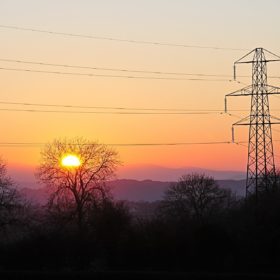
New analysis released by Lazard compares the levelized cost of energy for various generation technologies on a $/MWh basis and shows that renewables, specifically utility-scale solar and wind, are the economic frontrunners.
From pv magazine USA
Solar and wind are the most affordable sources of electricity, period, according to the most recent Levelized Cost of Energy comparison, released by Lazard.
The report is comprised of comparative levelized cost of energy (LCOE) analysis for various generation technologies on a $/MWh basis, including sensitivities for U.S. federal tax subsidies, fuel prices, carbon pricing and costs of capital. The cost isn’t represented by one concrete price, but rather a range of estimated prices given the circumstance applied.

In a base comparison, without taking into account subsidies, fuel prices or carbon pricing, utility-scale solar, both thin-film and crystalline silicon, as well as wind have the lowest LCOE of all sources considered. Utility-scale crystalline silicon PV comes in anywhere from $42 to $31/MWh, while utility-scale thin-film PV ranges from $38 to $29 and utility-scale wind registers the lowest possible LCOE over the largest range, from $54 to $26/MWh.
For comparison, under these same criteria, gas peaking comes in at $198 to $151/MWh, nuclear is $198 to $129/MWh, coal is $159 to $65/MWh and gas combined cycle is $73 to $ 44/MWh.
Outside of utility-scale, residential, commercial and industrial (C&I) and community solar all register much higher ranges, yet it’s misleading to look at these base figures. This is due partly to the fact that these types of facilities aren’t being built at the same scale as utility-scale solar or fossil generations assets, meaning that construction and customer acquisition costs are going to be much higher per MWh. Additionally, these projects are more reliant on the ITC to be built in the first place so their generation cost without this factored-in is not that meaningful.

When factoring in federal tax subsidies, rooftop PV comes in at $205 to $135/MWh, rooftop C&I follows at $161 to $66/MWh and community registers at $90 to $60, which is actually not that much lower than the subsidy free LCOE of $94 to $63.
Cost of operation
The really telling figures come from the comparisons between the cost of construction of new renewable energy facilities vs. operating existing fossil and nuclear resources. The only type of new renewable generation asset to have a higher per-MWh LCOE than operating existing coal is unsubsidized onshore wind, which isn’t even telling the whole story. The range of LCOE for unsubsidized onshore wind is higher at its peak than the maximum LCOE for operating existing coal, but the lowest end of the ranges favor wind, which comes in at a lowest-possible LCOE of $26/MWh, as compared to $34/MWh for coal.

As for solar, new, unsubsidized utility-scale projects come in at a LCOE range of $38 to $29/MWh, beating out coal, though coming in slighlty higher than the LCOE of operating nuclear or combined cycle gas plants, which range from $32 to 25/MWh and $32 to $23/MWh, respectively. Once subsidies are factored in, utility-scale solar becomes much more competitive, at $32 to $24/MWh.
Lắp đặt điện mặt trời Khải Minh Tech
https://ift.tt/2X7bF6x
0906633505
info.khaiminhtech@gmail.com
80/39 Trần Quang Diệu, Phường 14, Quận 3
Lắp đặt điện mặt trời Khải Minh Tech
https://ift.tt/2ZH4TRU
Không có nhận xét nào:
Đăng nhận xét